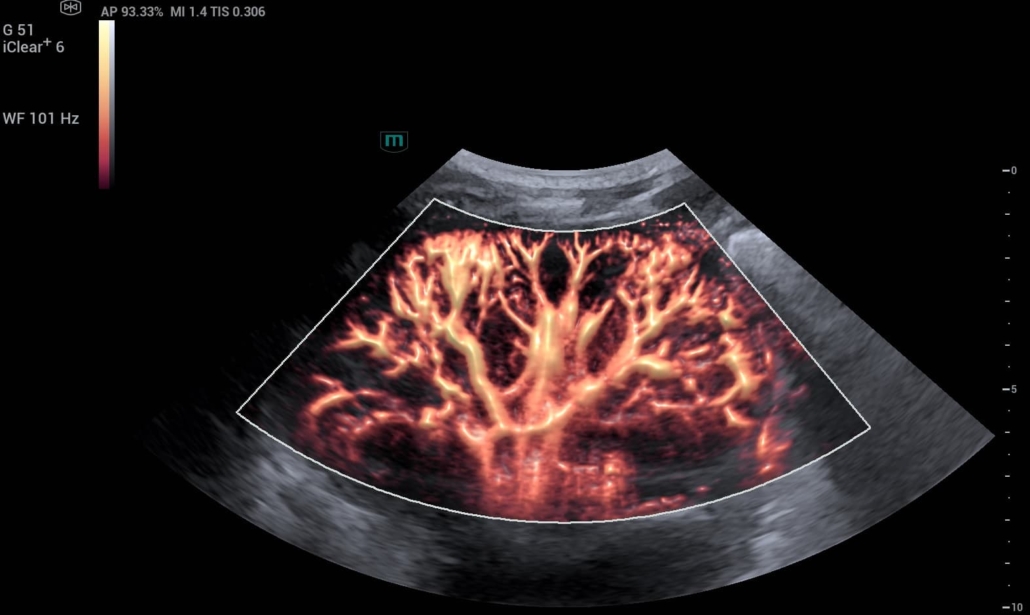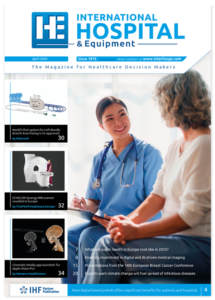Mindray launches premium ultrasound system to enhance diagnostic capabilities
Mindray, a global health technology provider, has unveiled its first premium ultrasound system, the Resona A20, with European specialists reporting enhanced diagnostic confidence and new approaches to patient assessment. The system, launched at the 35th congress of the European Federation of Ultrasound Societies in Medicine and Biology in Naples, promises to deliver unprecedented visualization of anatomical structures and pathologies.

Kidney ultrasound with Mindray’s Resona A20
“A new era for ultrasound”
Professor Vito Cantisani, president of the European Federation of Societies for Ultrasound in Medicine and Biology, described being “positively impressed” with the technology as one of its first users. “I found this new equipment very useful to evaluate deeply complicated cases,” he said. “The Resona A20 brings the best image quality for the highest level of confidence.”
The system incorporates multi-parametric evaluation software, which Professor Cantisani, who also serves as chairman of integrated advanced imaging at University Sapienza, Rome, highlighted as enabling “a comprehensive evaluation of my patients.”
“We are entering a new era,” he stated, noting that the technology allows all requested information to be displayed in real-time simultaneously.
Advanced visualization capabilities
The Resona A20 utilizes acoustic intelligence technology combined with Mindray’s next-generation transducers to improve acoustic focusing. This technological foundation supports healthcare professionals in visualizing previously undetectable details.
Key features highlighted by specialists include:
- Smart thyroid tool providing automatic real-time lesion detection
- HD Scope+ enhancement of border delineation, eco-structures, and lesion calcification
- Ultra micro angiography delivering highly sensitive detection of slow blood flow
- Super-resolution imaging capturing up to 500 frames per second

Ultrasound of breast carcinoma with Mindray’s new Resona A20
Potential for transformed clinical pathways
Professor Dirk-Andre Clevert, head of the Interdisciplinary Ultrasound Centre at the University of Munich-Grosshadern Campus, suggested the system could make a “major difference” in delivering quick, accurate diagnoses for kidney, liver and oncology patients.
“The A20 gives us the opportunity for super resolution,” he explained. “Five hundred frames a second means a very, very high resolution, and a lot of dynamic information, additional information for the tumour which doesn’t exist or can be missed in conventional contrast examination.”
For kidney transplant patients, Professor Clevert noted it was now possible to visualize “tiny kidney infarction not clearly visible by a contrast enhanced ultrasound examination.”
Cost and efficiency benefits
The system’s enhanced capabilities may reduce the need for additional imaging studies. “Around 30% of my liver examination patients need to have CT or MRI, and further contrast enhanced ultrasound,” said Professor Clevert. “There might be an option for a shortcut, to start with super resolution before going to MRI or CT – to save both time and money.”
Additionally, the Resona A20 processes image analysis on the same system, eliminating the need to transfer information to external computers.
Data-rich diagnostic information
The super-resolution capabilities generate substantial diagnostic data, capturing detailed vascular and dynamic information previously unavailable with conventional ultrasound.
“You have the option to see very tiny vessels which are not normally visible,” explained Professor Clevert. “You can see the flow direction, you get information regarding time of arrival, so how fast the contrast has arrived.”
He described the potential for a “very big power insight,” noting that “if you can acquire 500 frames in a second, and you can store 30 seconds, this means you have around 15,000 frames. This is a huge amount of data.”
- For more information, visit: http://www.mindray.com/en

